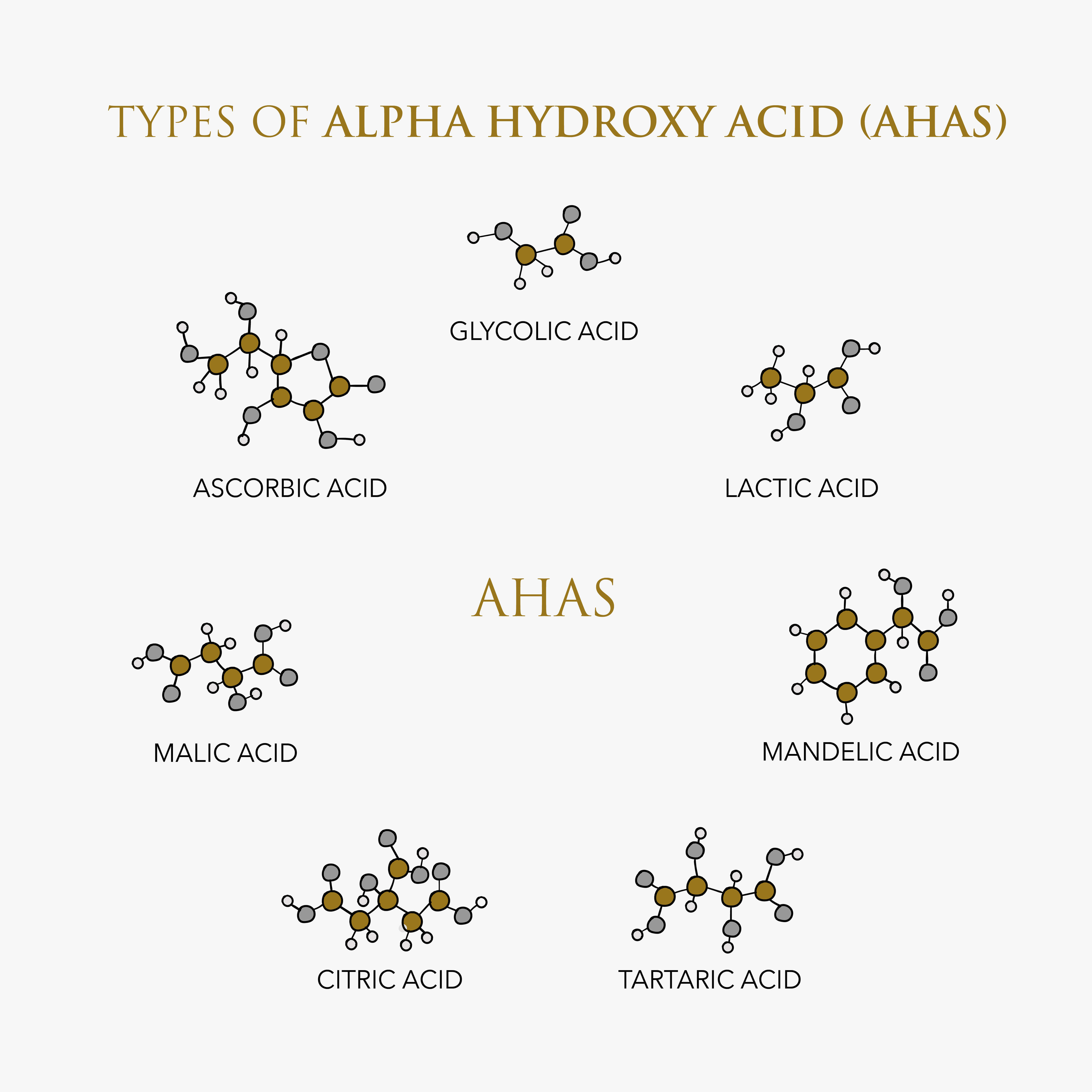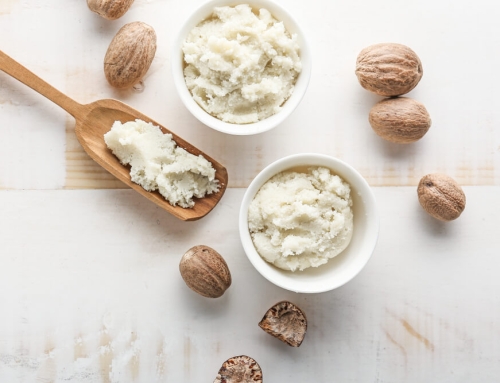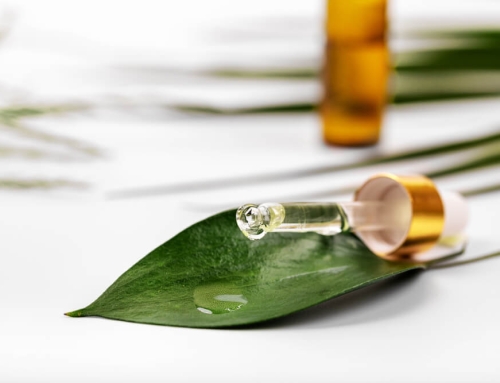Now that the summer is over, you will hopefully have made a few changes to your skin care routine, swapping out your lighter products for those that are richer and more nourishing. Your skin really does need the extra care during the winter season, but it can sometimes be difficult to understand exactly which ingredients are best.
To make it easy for you to give your skin all it needs this season, here are five ingredients worth adding into your winter skin care routine, each one bringing with it a unique array of benefits.
Plant Oils

Plant oils are often confused with essential oils, and while essential oils do come from plants, the plant oils you use on your skin are pretty different. This is largely down to their extraction process, with the best plant oils being cold-pressed in order to allow them to retain their potent compounds and nutrients.
So, why should you be using plant oils on your skin in the winter months?
Well, your skin would probably benefit from plant oils throughout the year, but they become even more advantageous in the winter. Plant oils have been proven to help the skin in a number of ways, including:
- Lowering inflammation in the skin
- Providing the skin with powerful antioxidants
- Restoring the skin’s protective barrier
- Enhancing penetration of certain other ingredients
- Providing anti-aging properties
- Speeding up wound and cell healing
Of course, there are so many different plant oils out there, and each one is unique in its own way. Here are some of the best plant oils to look out for when it comes to winter skin care:
- Olive oil
- Grape seed oil
- Sunflower seed oil
- Avocado oil
- Jojoba oil
- Soybean oil
- Rose hip oil
- Sweet almond oil
Top tip: using a few of these oils together will bring your skin even greater results. Check out the OROGOLD 24K Nano Day Recovery – it contains several of the above oils while also being infused with vitamins, plant extracts, sodium hyaluronate and peptides, all of which your skin will love in the winter months!
Now, you might be thinking…
If I have got oily skin, then surely those oils will only make my skin worse?
Some of them will, but others could actually transform your skin, helping it to produce less oil in the long run. Jojoba oil is an example of this – its molecular structure is so similar to the sebum that your skin produces itself. This tricks your skin into thinking that the jojoba oil is its own sebum, causing it to cut back on the amount of natural sebum it produces.
Let’s not forget, plant butters deserve a mention too.
These tend to be much thicker and richer than plant oils, making them great for moisturizing and hydrating in the winter. A few of the best plant butters to use on your skin include:
- Shea butter
- Cocoa butter
- Hemp seed butter
Depending on the product formula used, you may find these butters too heavy for your face, especially if you have oily skin. However, they are perfect for nourishing the skin on the body, leaving it feeling soft, smooth and supple.
Ceramides
Ceramides are an ingredient that you will often find in products targeting dry skin, but they are fantastic for all skin types in the winter months.
Wondering what ceramides actually are?
They are a group of fatty acids, also known as lipids. They make up a significant portion of your skin – in fact, around 50% of your skin’s outer layer consists of ceramides.

Ceramides connect up with other molecules in your skin, creating a solid barrier that not only protects your skin from external irritants and allergens, but also prevents moisture from evaporating out of your skin.
Now, moisture evaporation, which is also known as transepidermal water loss (TEWL), is something that you need to be very aware of in the winter…
The air in the winter is extremely dry, lacking in moisture. This causes the moisture within your skin to evaporate into the dry air at a much faster rate than it does in the summer, when the air contains more moisture and is therefore quite humid. This is something that happens no matter your skin type, although those that already have dry or sensitive skin will notice this to a much greater extent than those with oily skin.
Ceramides will help to strengthen this vital barrier on the outer edge of your skin, preventing the dry winter air from zapping away your skin’s moisture.
Wondering why you need additional ceramides when your skin already contains them?
Because these ceramides become damaged and depleted over time. Not only is this due to age, but also environmental factors, from sun exposure to pollution, meaning that just about everyone would benefit from topping up their ceramide levels.
There are currently around nine different ceramides that are used in skin care products, and just about all of these will benefit your skin.
Two other ingredients worth looking out for are:
- Sphingosine
- Phytosphingosine
Both of these are known as ceramide precursors, which means that they encourage the skin to naturally produce more ceramides of its own.
Hyaluronic Acid and Sodium Hyaluronate
While hyaluronic acid and sodium hyaluronate are used as individual ingredients, sodium hyaluronate is actually a form of hyaluronic acid, meaning that they both have similar effects.
Hyaluronic acid is famous for being one of the best humectants in the industry. A humectant is an ingredient that draws in water from the air around it, delivering this into the skin. As you already know, transepidermal water loss is a big problem in the winter, meaning that ingredients that are able to literally pull moisture from the air and bring this back to the skin are hugely beneficial.
There are several other humectants out there, such as glycerin and urea, but hyaluronic acid is the most effective. It is able to hold up to 1000 times its weight in water, with this moisture then being used by your skin as and when it needs it.
So, what’s the difference between hyaluronic acid and sodium hyaluronate?
It all comes down to molecular size:
- Hyaluronic acid is made up of quite large molecules
- Sodium hyaluronate consists of molecules that are much smaller
Molecular size is key when it comes to skin penetration. Your skin is not able to properly absorb large molecules, meaning that those ingredients usually stay on the surface of the skin. That isn’t necessarily a bad thing, as the surface layer of the skin is the one that is often in desperate need of replenishment.

However, this does mean that the deeper layers of your skin are not able to enjoy the benefits of hyaluronic acid, which is where sodium hyaluronate comes in…
Thanks to its smaller molecular size, sodium hyaluronate works on a deeper level, helping to hydrate the skin cells that lie beneath the surface.
Ideally, your winter skin care routine should contain both hyaluronic acid and sodium hyaluronate, as this means that both your outer and inner skin cells are benefiting from the ingredient.
This is why we made sure to incorporate both in the OROGOLD 24K Neck Duo Treatment. The 24K NeckLift Boosting Essence, which is designed to be used first, contains sodium hyaluronate, while the 24K NeckLift Nutri-Cream, which is layered over the top of the essence, contains hyaluronic acid.
Whether you opt for an essence, a serum, a cream, or anything else, both hyaluronic acid and sodium hyaluronate are worth investing in over the winter months.
Vitamin C
If you are only going to use one vitamin this winter, make it vitamin C.
Why?
Because this is such a multi-functional vitamin when it comes to skin care, and is one that benefits just about every skin type.
Wondering what vitamin C actually does for the skin?
A number of things, such as:
- Has powerful antioxidant properties, meaning that it fights the free radicals in your skin, preventing them from causing oxidative stress and speeding up the skin aging process
- Promotes the production of collagen and elastin, both of which are key proteins that give your skin its structure, smoothness and volume
- Prevents the skin from producing excess melanin, which is the pigment that gives your skin its color. Excess melanin production leads to dark spots and hyperpigmentation, which is why vitamin C is such a popular lightening and brightening ingredient
To make things a little more complicated, vitamin C comes in several different forms. The most potent is ascorbic acid, and this can bring about some significant skin improvements. However, ascorbic acid can often be too strong for certain skin types, which is when you would need to look into some of the vitamin’s derivatives:
- Tetrahexyldecyl ascorbate
- Sodium ascorbyl phosphate
- Ascorbyl palmitate
One other thing to keep in mind when purchasing vitamin C products…
Compared to many of the other skin care ingredients out there, vitamin C is not very stable. Everything from light to air to heat can break this ingredient down. Not only does this mean that you won’t be able to enjoy the benefits that vitamin C would otherwise bring, but the degraded ingredient can actually cause oxidative damage to your skin cells, which is something that you definitely do not want!
How can you avoid this?
By ensuring that the vitamin C product you choose meets the following criteria:
- Contained in packaging with a pump-style dispenser, as this minimizes oxygen exposure
- Contained in opaque packaging to prevent light from coming into contact with the product
You should also pay special attention to how you store your vitamin C products, as well as the rest of your skin care products in general. Keep these in a cool and dry place, away from any excessive heat or humidity.
Lactic Acid
Many people up their exfoliation game in the winter months. After all, you need to do something to get rid of that roughness and dullness, right?
In a way, this is true, but it all depends on the method of exfoliation you choose…
Your skin tends to be more sensitive during the winter months, meaning that a harsh face scrub simply won’t cut it. This will likely only end up aggravating your skin even further, exacerbating the very issues you are trying to fix.
While chemical exfoliation may sound harsher, it is actually much gentler than physical exfoliation, making it the technique to go with in the winter months.
There are several different chemical exfoliants that you can choose from. Glycolic acid tends to be the most popular because it is extremely powerful. However, due to increased sensitivities in the winter, many find glycolic acid to be a little too strong, which is why lactic acid is often the best option.

Lactic acid is derived from milk, making it naturally moisturizing. Just like glycolic acid, lactic acid helps to exfoliate the skin, but does not leave you susceptible to the same side effects.
As an added bonus, lactic acid can help your skin with so much more than just exfoliation, including:
- Treating hyperpigmentation and dark spots
- Reducing the visibility of enlarged pores
- Improving skin tone
Keep in mind that lactic acid, just like any other alpha hydroxy acid, increases your skin’s vulnerability to sun damage. Even during the winter months, it is important that you keep your skin protected with a sunscreen, especially if you are regularly exfoliating.
Skin care during the winter can be tricky – you will likely find that those very same products that you couldn’t live without in the summer simply aren’t cutting it in the winter. It all comes down to your skin’s needs changing with the seasons, but, if you with for the selection of ingredients mentioned above, it won’t be long before you notice nothing but improvements in the appearance and health of your skin.










